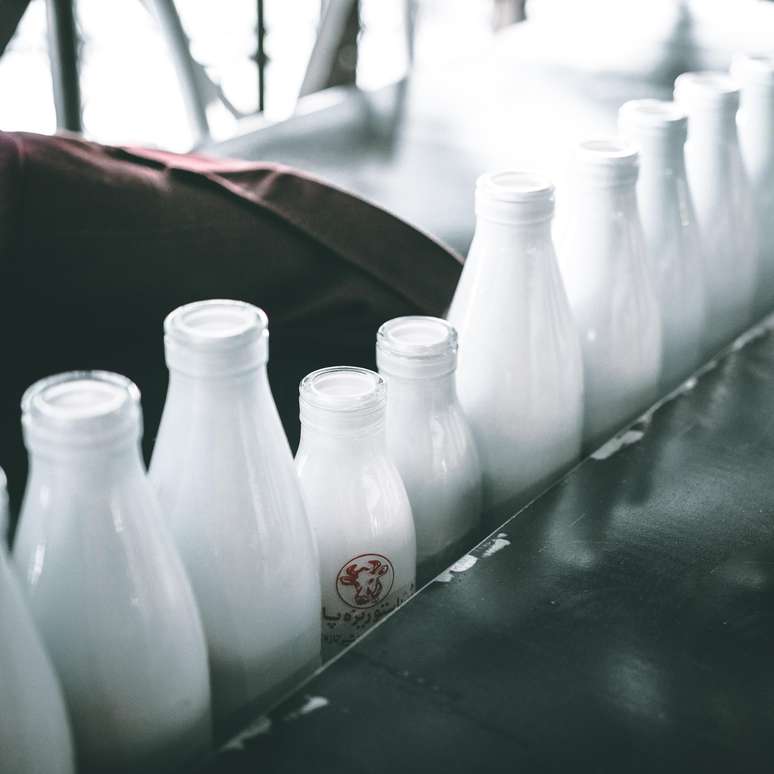The expert explains the differences between the types of milk and how to use them in the kitchen
html[data-range=”xlarge”] figure image img.img-d20ae554ec811e23bbf631b68bd4e06ehs8ci6or { width: 774px; height: 774px; }HTML[data-range=”large”] figure image img.img-d20ae554ec811e23bbf631b68bd4e06ehs8ci6or { width: 548px; height: 548px; }HTML[data-range=”small”] figure figure img.img-d20ae554ec811e23bbf631b68bd4e06ehs8ci6or, html[data-range=”medium”] figure image img.img-d20ae554ec811e23bbf631b68bd4e06ehs8ci6or { width: 564px; height: 564px; }
Have you ever stopped to think how many types of milk are there or what are the differences between them? If not, that’s fine. We spoke to the Anhembi Morumbi’s gastronomy professor, Pedro Drudi, to clarify all the doubts.
What are the types of milk?
According to the expert, Brazil does not have the same variety of milk and dairy products as Europe or the United States, which also have raw (unpasteurized) milk. In these parts the most common are wholemeal, semi-skimmed and skimmed.
“In these three types, the milk can also be homogenized. In this process, the milk passes through a sort of very fine filter which breaks down the fat into micro particles which prevent the formation of cream and increase the shelf life of the product. But even this makes it difficult the use of this milk in recipes that depend on the coagulation of milk proteins (casein) and the emulsion of fats”.
In addition to these, a novelty on the market is the A2A2 type, which are obtained from cows that have different genetics from common breeds. “This type of milk has a different protein, which is more digestible by our body and, in some cases, can help feed people with a milk protein allergy,” explains the professional.
Can powdered milk be used in any recipe?
Powdered milk is nothing but liquid milk that has been dehydrated through a spraying process. However, Pedro Drudi notes that it cannot replace milk in preparations, as it loses water and fat in the process. Therefore, it can only be used if the recipe calls for skimmed milk, not for whole milk.
What are the differences between cow, buffalo and goat milk?
The milk of other species has a different composition from that of cows, mainly in terms of lactose and other carbohydrates, proteins and fats, but they also change as regards the recipe: “Buffalo, goat and sheep milk is widely used in the production of cheeses, but here in Brazil they are rarely used fresh or even pasteurized.
On the other hand, buffalo milk is very present in the daily life of Ilha de Marajó, as is goat’s milk in the northeast.”
Furthermore, the flavors and aromas change according to the type. “The animal’s diet will greatly influence the taste of the milk, as well as its texture and composition. Cows that are fed hay or animal feed have more acidic milk than cows that graze on pasture. Sheep’s milk is brighter than cow’s milk and with a stronger aroma, but with a slightly almondy taste; buffalo milk is very close to the taste of cow’s milk, but richer and also sweeter, and goat’s milk has a strong and very different from the vaccine one, but it can be well used to replace it in recipes “, he exemplifies.
What are the most used milks in recipes?
Drudi says cow’s milk is normally used more in recipes due to its lower price, but it can be substituted for goat’s milk, which has a very similar structure. “Fresh milk is essential for the production of cheese and other recipes, but, in general, the use of non-homogenized pasteurized whole milk is preferred. Skimmed milk, in turn, is used in light recipes, but it must be bear in mind that their low fat content does not give the same result, especially in the final texture, which may be less creamy depending on the recipe”, he clarifies.
What are the differences between milk A, B and C?
According to the professor, the nomenclature of types of milk A, B and C are already somewhat outdated, because before pasteurization the milk in bags was removed in a more rudimentary way, and the Ministry of Agriculture and Anvisa have used the classification for target the consumer. A being from cleaner production and better cows, and B and C being the two worst, which had faecal solids and coliforms.
“Currently the rules have not changed much, so much so that this classification of the maximum number of bacteria, faecal coliforms, microorganisms and solids present in A, B and C milk has still been maintained, but modified to include this number after pasteurization. OB and C already have a bit more solids and microorganisms present, even after this process,” he points out
What are you doing with the milk cream?
Many people end up throwing away the cream, but it is possible to reuse it by making recipes, as Pedro Drudi says: “Cream is the fat in milk and it is from the cream of fresh milk that cream is obtained, for example. it has fat and protein, in addition to carbohydrates. Therefore, we can use it in different recipes as a substitute for milk cream or even to thicken sauces. In confectionery it is widely used for the production of biscuits and cakes”.
Source: Terra
Ben Stock is a lifestyle journalist and author at Gossipify. He writes about topics such as health, wellness, travel, food and home decor. He provides practical advice and inspiration to improve well-being, keeps readers up to date with latest lifestyle news and trends, known for his engaging writing style, in-depth analysis and unique perspectives.









